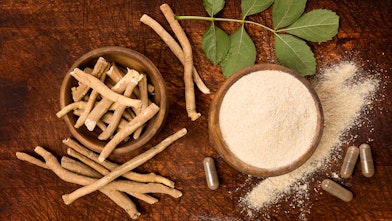Dr Bergs Webinar on STRESS Get Rid of Stress and Sleep Like a Baby
Stress feels like it never lets up, right? We hear so much about how to handle it, but a lot of the advice just skims the surface and doesn't provide lasting stress relief.
You're looking for something more substantial. You might be asking yourself, how do I deal with stress that's been building up for years? Or trauma that seems stuck in your body?
Understanding the Cumulative Nature of Stress
Stress isn't merely a temporary feeling. It's something that accumulates over time.
Physical injuries, surgeries, and emotional traumas can become ingrained in our tissues. All of it adds up, and the impact is significant.
The Adrenal Glands: Your Stress Responders
The adrenal glands, located on top of your kidneys, respond to stressors. They adapt by making adjustments, such as changing your pulse rate and releasing adrenaline.
Constant stress can exhaust your adrenals. This affects many aspects of your health.
Cortisol: The Key Stress Hormone
Cortisol is the primary stress hormone produced by the adrenal glands. Elevated cortisol levels can lead to various symptoms and potential health issues.
However, having too little cortisol can also be problematic. Balancing this hormone is important and can significantly impact your well-being, even affecting your blood sugar.

How Chronic Stress Impacts Your Mind and Focus
When stress accumulates, your mind becomes overloaded. You're juggling numerous concerns, both significant and minor, ultimately affecting your ability to concentrate.
The ability to focus is crucial, a fact that's often underestimated. Completing tasks depends on it, but attention diminishes over time, often accompanied by a decline in productivity.
The Downward Spiral
When your focus deteriorates, you may experience brain fog. This might lead to a need for and dependence on caffeine. Many individuals then turn to options like Starbucks.
Stress eventually diminishes your stress tolerance. This means that minor irritations or interactions with challenging individuals will impact you more significantly than before.
The Physical Toll of Long-Term Stress
Persistently high cortisol levels can contribute to issues like blood sugar imbalances, potentially diabetes, inflammation, or arthritis.
Additionally, other serious health conditions, such as high cholesterol and high blood pressure, can arise.
Tests are available to assess stress levels. Heart rate variability testing directly measures the amount of stress on your system. This type of testing can offer clues about stress reduction.
Releasing Physical Stress for Better Sleep
We're not discussing quick fixes. Imagine releasing stress from the body. One of the most vital steps is improving your sleep quality, which is essential for achieving this.
Improving sleep can have numerous long-term benefits, including rejuvenation. Stress truly depends on a strong foundation of rest, as better sleep is a known stress reliever.
It can also help with relieving stress long-term by improving your baselines.
Targeting the Neck: Your Upper Cervical Technique
Many people hold a significant amount of tension and stress in their upper neck and the muscles connected to the skull. Addressing this area can promote relaxation.
By applying equal pressure with your thumb and middle finger, you can target these tense muscles.
It may seem unconventional, but try positioning your fingers just below the ridge of the skull. Then, apply counter-pressure on the forehead.
This activates the parasympathetic nervous system, which is known to induce deep relaxation. This technique can induce sleepiness when performed correctly.
The next time you experience sinus problems or a sleep apnea episode, have someone apply this technique to your second vertebra.
You might find that you breathe more easily and experience fewer sinus issues. This area often sees a lot of stress hormones released, so it's good to focus here.
As you move down the neck, you may encounter other issues, such as a large knot on the third vertebra.
Continue moving down to address any sore throats and hoarseness that a person might experience. When you reach vertebra C6, you're at the area connected with the thyroid.
Applying deep breathing techniques can be a powerful way to reduce stress in conjunction with massage.
Unlocking the Collarbone: Subclavius Release
Beneath the collarbone lies a muscle that often goes untouched, yet it's incredibly important. The clavicle holds hidden tension.
The simple method involves lifting a person's head back, spreading their arms by hooking under the collarbone and lifting up.
Continuing this back-and-forth motion helps release tension in the neck. This will improve their ability to tilt their head backward.

Mid-Back Mobility: The Sympathetic Nervous System
Your "fight or flight" responses are located in the mid-back. This is known as the sympathetic nervous system. Targeting the ligament that connects those muscles on your vertebrae can significantly benefit individuals with poor posture.
The movement begins with pressing the pivot point with your fingers while pulling the person over. Maintain a straight body posture while pressing to conserve energy.
Make sure to position your elbow and body behind theirs for optimal leverage. Your aim is to target those ligaments.
Addressing the Abdomen: Releasing Adrenal Stress
It's widely recognized that everyone's adrenal glands are significantly overworked. People often neglect the area around the kidney, which houses a large number of nerves connected to it.
Releasing that area will alleviate tension and pressure. Chinese acupressure identifies a crucial connection between the adrenal areas and specific points around the belly button.
Locate the point one inch down on the right. Use your thumb and middle fingers to explore for sore spots.
This has been described as releasing pockets of tension. A major benefit could be stress relief and deeper sleep.
Working with a Tool to Replicate Your Hand
Having the ability to replicate professional hand movements is essential for many people to relieve stress at home.
Using a stress massage tool simulates the feel of your hand, thumb, or fingers to work out those persistent areas.
By not waiting, you can experience relief whenever needed. It is best not to use a sharp object with the tool. The results might cause more stress.
Tackling Jet Lag with Acupressure Points
Those smaller areas can be particularly bothersome, especially during air travel. A way to rejuvenate those acupressure points could significantly reduce stress and anxiety.
You can incorporate this into various flight relief techniques. Individuals who have been traveling long flights for years can discover new ways for their bodies to respond.
Layering Stress Relief Techniques
Persistent accumulation requires consistent release. These stress relief layers can be compared to peeling back an onion, gradually promoting relaxation over time.
Those minor annoyances or irritations that cause tension to return will gradually diminish in intensity. Many look for stress relievers that they can perform without others.
These should all be thought of as good ways of managing stress. Combining different techniques should always be encouraged. Below is a helpful table on how they could work together.
Techniques and Their Benefits
Upper Cervical
Focus Area: Neck muscles
Potential Benefit: Improved sleep and relaxation
Subclavius Release
Focus Area: Collarbone
Potential Benefit: Reduced neck tension
Mid-Back Mobility
Focus Area: Sympathetic nervous system
Potential Benefit: Improved posture
Abdomen Release
Focus Area: Adrenal glands
Potential Benefit: Reduced stress and deeper sleep
Acupressure
Focus Area: Various points
Potential Benefit: Jet lag relief and anxiety reduction
We also offer additional products. Examples include a Sleep Aid for improved sleep. You might also want to explore Adrenal and Cortisol Relief, which could help manage your stress levels throughout the day.
Relaxation and Recovery: Simple Strategies to Reduce Stress
Managing stress effectively is crucial for maintaining overall health, and incorporating relaxation techniques into your routine can make a significant difference.
One of the easiest yet most effective ways to unwind is by taking advantage of hot bath benefits, which help lower cortisol levels and promote a deep sense of relaxation.
The warm water soothes tense muscles, improves circulation, and encourages the body to shift into a parasympathetic state, reducing stress and enhancing recovery.
Pairing hot baths with a balanced keto diet and intermittent fasting can further support stress management by stabilizing blood sugar levels and reducing inflammation.
When combined with mindfulness practices, quality sleep, and proper hydration, these strategies create a holistic approach to stress relief that enhances both mental and physical well-being.
Prioritizing relaxation is just as important as diet and exercise in achieving long-term health.
Conclusion
The accumulation of stress is a significant issue for many people, and it's often overlooked. Acknowledging this is crucial because it allows us to recognize how emotional experiences and even injuries can become embedded within the body.
These specific methods are designed to start peeling away those layers. These advanced, practical, and effective stress relief techniques target your tension areas while promoting rejuvenation through deeper sleep.
Applying our new strategies means our physical well-being will change going forward. Remember to seek out support groups or qualified professionals for serious stress that is causing problems in your daily life.
FAQs about stress relief techniques
What are 5 coping strategies for stress?
Five effective coping strategies for stress include practicing relaxation techniques, engaging in physical activity, dedicating time to enjoyable activities and hobbies, prioritizing sufficient sleep, and cultivating gratitude.
These strategies are essentially healthy lifestyle choices that promote both mental and physical well-being.
What are the five stress management techniques?
The five core stress management techniques can be categorized as follows: relaxation response exercises that alleviate muscle tension.
Physical activities might involve spending more time outdoors. Emotional well-being entails fostering personal connections with friends.
Lifestyle management involves modifying daily schedules to reduce the number of commitments.
Lastly, a less commonly discussed aspect involves cultivating positive thinking by concentrating on things you're thankful for in your everyday life.
Previous blog
First Do No Harm A Ketogenic Diet MovieNext blog
Results of the Stevia Ketosis Experiment
Popular
08/21/2024
53.6K views
02/23/2025
45.4K views
11/18/2024
270.1K views
03/18/2024
11/21/2022




